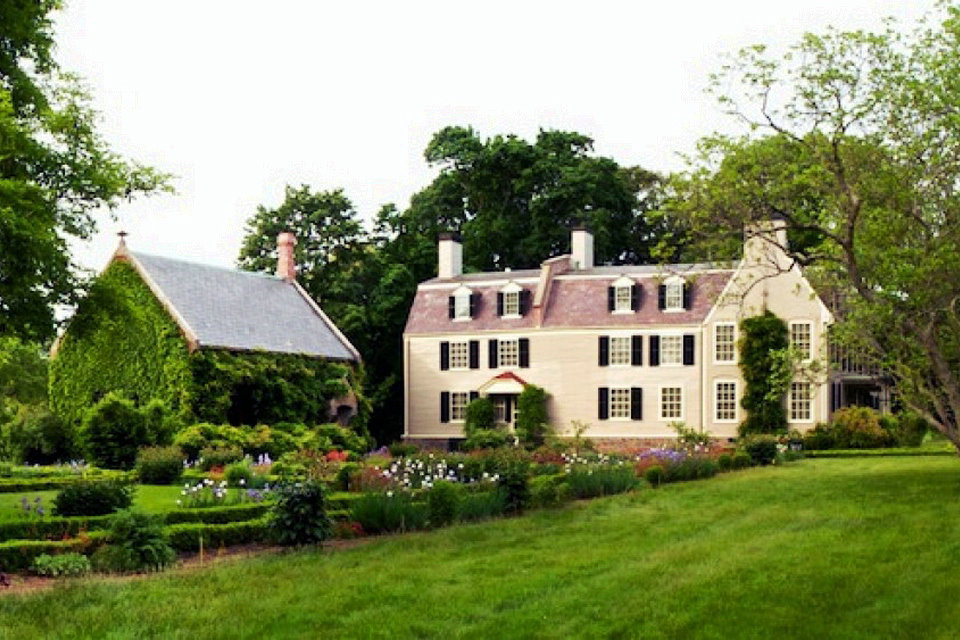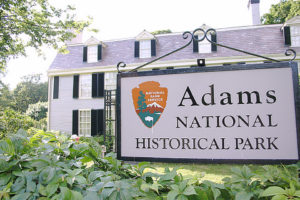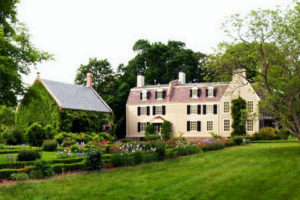Adams National Historical Park was the home of two American presidents and subsequent generations of their descendants from 1720 to 1927. The family’s experience represented, shaped, and mirrored significant events in the social, cultural, political, and intellectual history of the nation. The purpose of the park is to preserve and protect the grounds, homes, and personal property of four generations of the Adams family and to use these resources to interpret the history they represent and to educate and inspire current and future generations. In addition, the Adams Memorial Society, consisting of members of the Adams family, charged the National Park Service with the distinct mission to “foster civic virtue and patriotism” at Adams National Historical Park. This mission still continues today through partnerships, including those with the Adams Memorial Society, local organizations, and the city of Quincy.
The Old House at Peace field, built in 1731, became the residence of the Adams family for four generations from 1788 to 1927. It was home to Presidents John Adams and John Quincy Adams; First Ladies Abigail and Louisa Catherine Adams; Civil War Minister to Great Britain Charles Francis Adams; and literary historians Henry and Brooks Adams. The vast collection of original artifacts inside the Old House greatly assists the park’s interpretive staff to relate the Adams family’s legacy of service to their nation. Adjacent to the house is the Stone Library, built in 1873, it contains more than 12,000 books that belonged to the Adamses. Following a tour, you may wish to stroll the Old House grounds which include a historic orchard and an 18th-century style formal garden, containing thousands of annual and perennial flowers.
John Adams’ quote in 1780 prophetically illustrates the diverse elements that would come together to create the museum collections of the Adams NHP. The park is comprised of 13 acres, 11 buildings and a collection comprising approximately 100,000 objects including original furnishings, books, archival materials and archeology donated by the family in 1946. The park encompasses not only the Old House (the Adams Family Mansion, c 1730) with its “objects of significance” but the birthplaces (17th Century saltbox structures) of two presidents: John Adams (1797-1801) and John Quincy Adams (1825-1829).
The original portion of the Old House was built in the first half of the eighteenth century and was associated with the Adams family for over a century and a half from 1787 to 1946. In making this gift to the American people, the intention of the Adams family was that the area be preserved as a historic site to “foster civic virtue and patriotism.”
The collection serves to interpret the Adams family’s history that includes two presidents, statesmen, writers and historians over five generations and illustrates the changing relationship of the artifacts to the family members. The artifacts, historic structures, and historic landscape reflect the family’s experiences and represents, shapes, and mirrors the significant events in the social, cultural, political, and intellectual history of the nation.
The historic integrity of the park and associative collections are superior. Ninety-nine percent of the objects associated with the family are original artifacts, while the remaining are reproduction upholstery, bedspreads and wallpaper. Many elements of the collection are significant in their own right, apart from the historic structures and objects’ associative history. This is particularly true of the American paintings by William Morris Hunt, Edward Savage, Mather Brown, and John Trumbull. The American furniture includes an American Queen Anne Highboy, Grecian card table attributed to Thomas Seymour as well as Federal style mahogany banquet table. European furniture comprising of Dutch Chairs, French Secretary, and Louis XV Settee and Chairs represent John Adams’ diplomatic service to the nation in France and Holland.
The collection also includes, 17th Century Primitive American Paintings, American and European decorative arts, architectural elements, an associated archeological collection, 19th Century photographs, Print Collection, and an archives collection comprising of Resource Management Records (1946-present), Adams Family Papers (1745-1927), and the Adams Memorial Society Papers(1927-1946).


